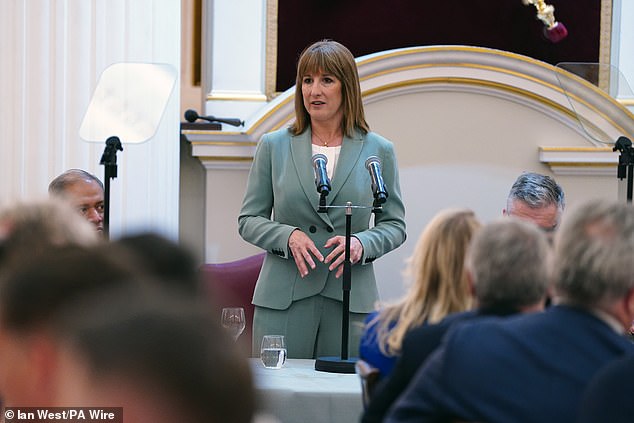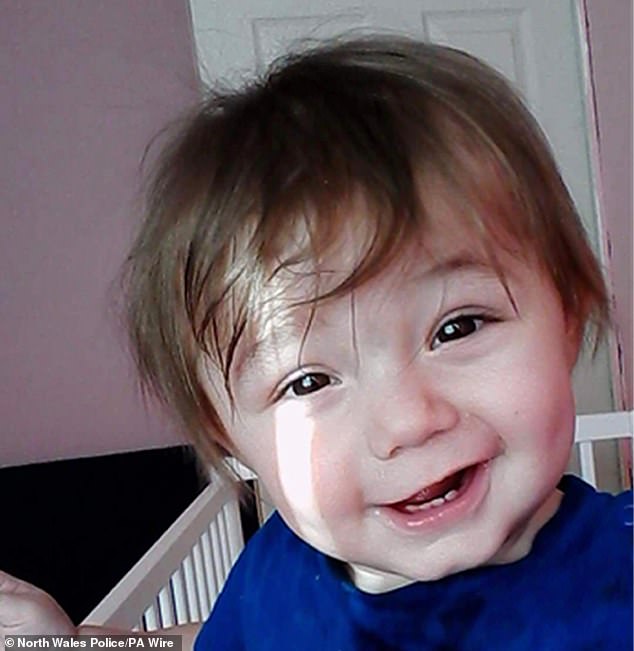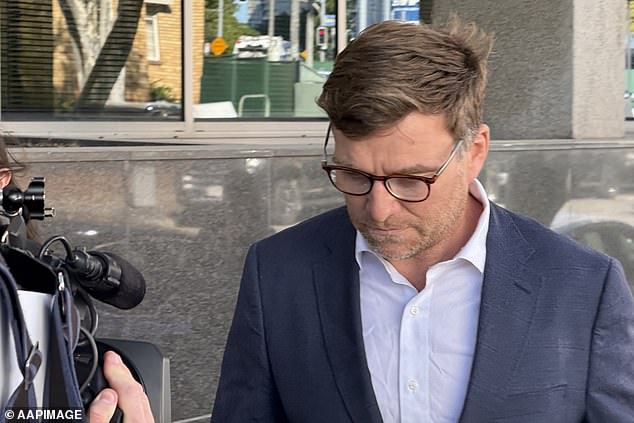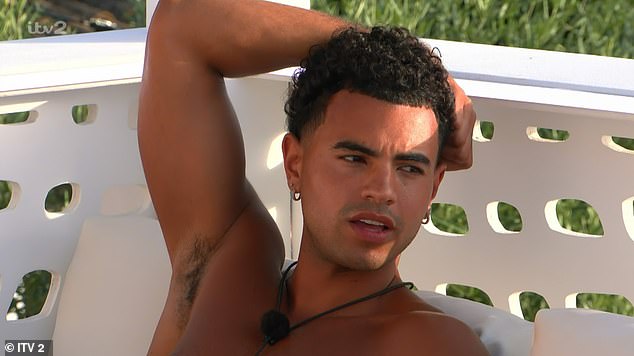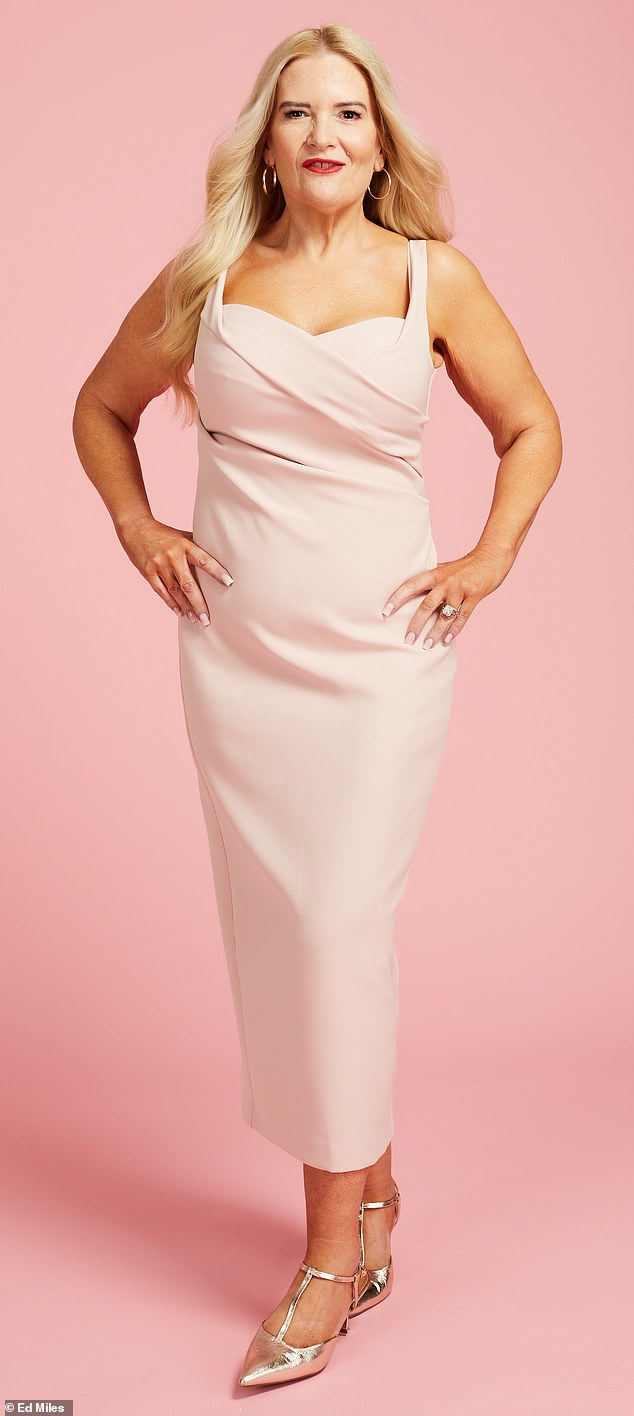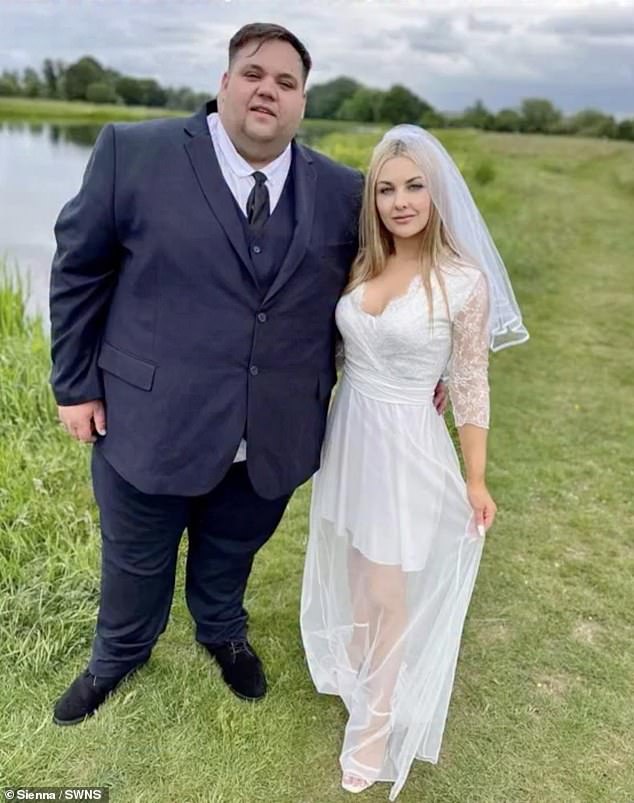Follow Daily Mail Australia’s live coverage of accused mushroom chef Erin Patterson‘s murder trial at Latrobe Valley Magistrates’ Court in Morwell, Victoria.
Justice Christopher Beale shared some firm advice with the jury before sending them home early on Friday.
He urged them to have a ‘media blackout’ and not let ‘anybody get in your ear’.
It comes as the mammoth trial draws closer to its end and the jury prepares to deliberate a verdict.
Verdict in mushroom murder trial could come as early as today
Justice Christopher Beale commenced his address to the jury — or ‘charge’ — last week after allowing jurors to prepare for the closing stage of the marathon Erin Patterson murder trial.
On Thursday, Justice Beale indicated that his address will conclude today and then two jurors will be balloted out before the remaining 12 decide Patterson’s fate.
This means there is a possibility a verdict in the murder trial, which has garnered worldwide attention, could come as early as today.
Patterson, 50, is accused of murdering her in-laws, Don and Gail Patterson, and Gail’s sister, Heather Wilkinson, after allegedly serving them a beef Wellington lunch made with death cap mushrooms.
Patterson is also accused of attempting to murder Heather’s husband, pastor Ian Wilkinson, who survived the lunch after spending several weeks in an intensive care unit.
The court heard Patterson’s estranged husband, Simon (pictured), was also invited to the gathering at her home in Leongatha, in Victoria’s Gippsland region, but didn’t attend.
Witnesses told the jury that Patterson ate her serving from a smaller, differently-coloured plate to those of her guests, who ate off four grey plates.
Patterson told authorities she bought dried mushrooms from an unnamed Asian store in the Monash area of Melbourne, but health inspectors could find no evidence of this.
Jury briefly retires to ballot out two members
Justice Beale has completed his charge and briefly retired the jury to ballot out two jurors.
He told them to not make comments during the ballot and said the foreperson cannot be balloted out.
‘Not even goodbye,’ Justice Beale said.
‘There is to be no contact… until after the case is over.’
Justice Beale thanked the two to be balloted and reminded them not to discuss the case until it’s over.
He has previously told the jury its verdict must be unanimous and each member must agree.
He told the jurors they could rely on different pieces of evidence to reach that conclusion.
Once a verdict has been reached they were told to ‘hit a buzzer’ and they would be brought into court.
The foreperson would then be asked to deliver the verdict.
Justice Beale said the verdict would then be confirmed with the jury it can return to court to ask questions.
He said he will discuss the question with the prosecution and defence before addressing the question in court.
The jury was told it will deliberate Monday to Saturday in court in a jury room.
Justice Beale told the jury never to offer him the numbers – that is, how jurors were positioned on the verdict.
He told them again to only discuss the case among themselves.
Justice Beale offered a ‘warm thank you’ to whoever got balloted off and noted he was unsure if they would be ‘relieved or frustrated’ upon learning their fate.
He said all jurors would be offered the chance to get off the jury duty list for 15 years.
Justice Beale summarises defence case as charge nears its end
Justice Beale is summarising the defence case, telling the jury Patterson ‘had an innocent motive’ to tell the lies she told.
Justice Beale said Patterson did not need to prove she was a forager, but for the prosecution to prove she was not.
Patterson said she wanted lunch because she was worried about ‘distance’ seeping into her relationship with the Patterson family.
‘Her medical test lies were to keep those people in touch with her,’ Justice Beale said of Patterson’s claims.
Justice Beale reminded the jury the guests had already eaten their Wellingtons when Patterson mentioned her bogus cancer claims.
The jury was told the defence had also claimed the prosecution made ‘ridiculous’ propositions.
Jury told to judge murder case with their heads and not their hearts
Justice Beale has warned the jury to judge with their heads and not their hearts.
The jury heard there were hundreds of exhibits that had been tendered in the trial from both the defence and prosecution.
Justice Beale said he had directed the jury toward disputed events in the hope of offering some assistance in how to deal with them
He said he was trying to ‘stimulate’ the jury’s memory.
Justice Beale also reminded the jury ‘no medico’ noted Patterson being sick at hospital.
He also pointed out no-one had ever noted Patterson to be a forager apart from herself, and the jury might find Patterson had ‘no credibility’.
Justice Beale again warned the jury against feeling ‘sympathy’ as it can ‘cloud judgment’.
‘The defence say it is a reasonable possibility Patterson didn’t mean to kill anyone,’ Justice Beale said.
He reminded the jury about Mr Mandy’s closing address, which accused the prosecution of ‘cherry picking’ evidence and of being ‘unfair’.
‘Don’t be influenced by sympathy or prejudice,’ Justice Beale said.
‘Use your heads not your hearts. It’s a tragedy that three people died and one nearly died.
‘It’s natural for you to have been moved when the family of the deceased were giving evidence. You would have felt a deep empathy for them and their loss.
‘There can be an instinctive response to punish the person responsible. We know Erin Paterson caused their deaths because she cooked and served the meal, but you have to fiercely guard against such a reaction as judges.
‘What’s in your hearts has no relevance.’
Defence claims it makes more sense to mark the pastry, rather than eat off a different plate
Justice Beale said the prosecution described Mr Wilkinson’s evidence as ‘compelling’ and he should be believed.
‘Dr Rogers claimed Patterson had complete control over what went into the Wellingtons and deliberately killed them,’ Justice Beale said.
Mr Mandy claimed it would have made more sense to mark the pastry on the ‘non-poisoned’ Wellington rather than use a different coloured plate.
Justice Beale pondered if Patterson had served her own plate, while repeating Mr Wilkinson’s claim Patterson had served herself.
Patterson claimed she told her guests to ‘grab a plate’ while she attended to the gravy.
She claimed she didn’t see them take their plates, but she just grabbed the last one left.
The defence also claimed no instructions had been given to the lunch guests about which plates to eat from.
Jury told about the evidence of Patterson’s plates
Justice Beale took the jury through the issue of Patterson’s supposedly ‘different coloured plate’.
The jury heard Mr Wilkinson had claimed seeing four grey plates and that Patterson ate from a smaller, different coloured plate.
The jury was reminded about the evidence of Simon Patterson who claimed Don called him at 8.45am on July 30, 2023 and said he was sick.
Simon said Don said Ian and Heather were sick too, so he went to check on them.
The jury heard Heather told Simon she noticed Patterson had eaten from a different coloured plate than them.
The jury heard he drove Ian and Heather to hospital, where Heather again asked about whether Patterson was ‘short on crockery’ because of that coloured plate.
Simon claimed his wife did have a mismatched set of plates
The jury heard the son’s friend had noted Patterson’s plate after the lunch too.
He said he believed he saw some white plates in the sink.
Patterson’s son also noted he saw white plates, about 15cm in diameter, which he believed were dinner plates.
Patterson’s daughter also noted a black and red plate and some white ones.
Investigators captured photos of several plates within Patterson’s kitchen during the August 5, 2023 police search.
An image showed a dishwasher with some plates, and a multi-coloured plate could be seen in one image.
Although police did not take photos of plates or measure them – all the images obtained came from stills taken by a video.
Another image showed a black plate with a red top, while plates in a draw appeared to show some were black with a ‘red tinge’.
Patterson told the jury she served up the lunch on dinner plates, a couple black, a couple white, and she did not own grey plates.
Patterson claimed she had no smaller coloured plate and Mr Wilkinson had given ‘incorrect evidence’.
Jury hears why Patterson made individual Wellingtons
Justice Beale is taking the jury through key evidence about the lunch, including the ingredients used to make the Wellingtons.
The jury heard how Patterson decided to cook individual Wellingtons rather than a whole log, as the recipe book suggested, because she couldn’t source a piece of meat long enough to make a large individual Wellington.
Justice Beale then reminded the jury about Patterson’s Woolworths shopping receipts, which included purchases of mushrooms, puff pastry and individual eye-fillet cuts.
Patterson had ‘no reason’ to commit alleged murder, jury hears
Justice Beale said the defence claimed any issues Patterson had with Simon and his parents had effectively been resolved by the time of the lunch on July 29, 2023.
Mr Mandy said the lack of motive suggested it was an accident Patterson had killed her guests.
Justice Beale said the defence claimed Patterson had custody of her kids, was financially stable and had no reason to commit murder.
The defence claimed Patterson also would have known she would have come under the spotlight by police quickly.
Beale: Jury doesn’t need to know why Patterson allegedly killed her in-laws
Justice Beale again reminded the jury that the prosecution conceded ‘there is no evidence of a motive for her to have committed the alleged offences’.
Justice Beale said the prosecution relied on other evidence as demonstrating that Patterson’s relationship with her in-laws in the lead up to the lunch was ‘not as rosy’ as it appeared.
The jury heard Justice Beale referred to the Facebook messages Patterson sent to her online friends, in which she complained and swore about Simon and his family, and she had allegedly used ‘eye rolling’ emojis in some of these messages.
Justice Beale said the jury didn’t need to know why Patterson allegedly killed her in-laws, just that she did it.
He reminded the jury about Simon’s evidence yet again and how he believed his wife had become ‘aggressive’ in her correspondence.
The jury was told the defence claimed Patterson had no reason to kill the grandparents of her children.
The defence claimed Patterson’s ‘intention’ to kill them made no sense and it assisted her case when it came to the prosecution’s lack of known motive for the alleged crime.
Patterson a ‘person of good character’, jury told
Justice Beale reminded the jury about evidence which suggested Patterson had been a ‘person of good character’.
‘Turning to the first of those issues, whether she had good reasons not to kill her lunch guests, I refer you to the directions on good character, where I summarized evidence given by Simon Patterson, Anna Terrington, Matthew Patterson, Tanya Patterson,’ he said.
‘She’d also been a loving daughter in-law to Gail and Don, including after her formal separation from Simon. Don and Gail loved her, and that Don and her had a special bond.’
Justice Beale also reminded the jury Homicide Squad detective Stephen Eppingstall told the jury Patterson didn’t have a criminal history.
Jury told of the ‘ultimate issue’ they must decide
Justice Beale is taking the jury through the ‘ultimate issue’ they need to consider, which is whether Patterson deliberately included death caps in her feast.
‘Now the ultimate issues are whether the accused deliberately included death cap mushrooms in the beef Wellingtons and whether she had the state of mind necessary for the alleged offences at the time she served the beef Wellingtons to them,’ Justice Beale said.
‘There are a number of issues that are related to those ultimate issues, and they include whether the accused had good reasons not to kill her lunch guests.
‘Whether she foraged for edible mushrooms, why she cooked individual beef Wellingtons, why the children weren’t at the lunch, whether she had a different plate to a guest, whether she allocated her own plate.
‘Whether she engaged in incriminating conduct after the lunch.’
Justice Beale commences part two of his charge
Justice Beale has commenced part two of his charge, which he says are the issues the jury must consider while deliberating.
‘Remember, you have to consider all the evidence and arguments, not just the evidence and arguments I mentioned in my summary, which just can’t cover everything,’ Justice Beale said.
‘The fact that I mentioned a piece of evidence doesn’t mean it’s important, and vice versa. What pieces of evidence are important or unimportant? Is, for you the jury to decide.
‘Similarly, the fact that I mentioned argument doesn’t mean it has merit or vice versa. You decide what arguments do and don’t have merit.’
Jury given update on when Justice Beale expects to end his charge
Justice Beale took the jury through miscellaneous concerns with the evidence, including medical evidence from Leongatha hospital related to PCR tests.
The jury heard Patterson’s bowel movements had PCR tests performed on them, but no toxins were detected in the samples.
However, Justice Beale said PCR tests would not have picked them up anyway and told the jury to ignore it.
Justice Beale then told the jury he had 100 or so more pages of his charge to go, before sending them out for a short break.
Alleged victim appears sombre
Pastor Ian Wilkinson, with his arms crossed, looked sombre as the jury was instructed on how it should deal with the charge related to his attempted murder.
‘Turning to the elements of attempted murder, as you know… to prove that the accused committed the offence of attempted murder, in relation to Ian Wilkinson, the prosecution must prove the following four elements beyond reasonable doubt,’ Justice Beale said.
‘One, that the accused consciously, voluntarily and deliberately served Ian Wilkinson a poisoned meal, that’s the alleged conduct.
‘Two, the accused alleged conduct was more than merely preparatory to killing Ian Wilkinson, and immediately and not remotely connected with killing Ian Wilkinson.
‘Three, at the time of the alleged conduct, the accused intended to kill Ian Wilkinson, and four, the accused alleged conduct had no lawful justification or excuse.’
Justice Beale also reminded the jury Austin ICU doctor Professor Stephen Warrillow gave evidence at one stage that Mr Wilkinson looked like he would die.
Jury asked to consider if Patterson served up Wellingtons with ‘murderous intention’
Justice Beale is telling the jury about the elements of murder, again explaining how the crime needed to be deliberate.
He said making and serving the deadly Wellingtons needed to be ‘conscious, voluntary and deliberate’.
Justice Beale said it could be no accident what was in dispute was: ‘Was this an accident?’
‘I’ve, in relation to my directions on the elements of murder, I’ve dealt with them collectively, but there are three charges of murder, and you have to consider the evidence in relation to each count of murder,’ Justice Beale said.
‘Understand that what’s in dispute is: was it deliberate serving up of a poison meal, and when that was done, was it done with murderous intention, an intent to kill or to cause really serious injury?’
Justice Beale also told the jury the prosecution argued Patterson was in the ‘right state of mind to deliberately murder her guests’.
Jury told Patterson ‘did not need to prove anything’
Justice Beale addressed the ‘burden of proof’ and reminded the jury a person was ‘presumed innocent’.
He said Patterson did not need to prove anything, but the prosecution had to prove her guilt beyond reasonable doubt.
However, Justice Beale said not every fact needed to be proven beyond reasonable doubt.
Justice Beale also explained to the jury motive and why some cases have them and others don’t.
He said the prosecution could offer no motive here and the defence claimed there was evidence Patterson had good reasons not to kill her guests.
Justice Beale said the defence claimed Patterson had a good relationship with her in-laws, she ‘had been in a good place’ and was financially secure and happy.
‘Why would she risk throwing all that away?’ the defence argued.
But the prosecution claimed Patterson felt isolated from her in-laws and her relationship with Simon had soured.
Justice Beale said the prosecution did not need to prove motive, but he said it was relevant to Patterson’s defence.
Jury told about circumstantial evidence and warned ‘not to guess’ while deliberating
Justice Beale said sometimes people made mistakes, but the jury needed to decide if Patterson knew her statements were untrue when she made them.
He explained to the jury about circumstantial evidence and how it works.
Justice Beale told them circumstantial evidence was ‘no weaker than other evidence’.
But he warned the jury to consider all the evidence in the case.
‘Do not guess,’ Justice Beale warned.
Justice Beale then described the trial like a jigsaw puzzle, which caused a major fit of laughter from the jury.
Mr Mandy criticised the jigsaw analogy during his closing address to the jury.
Prosecution claimed Patterson lied about weight loss surgery plan
Justice Beale is taking the jury through Patterson’s claim she had a pre-surgery appointment for gastric-bypass surgery at the ENRICH Dermatology & Cosmetic Clinic.
The jury heard Patterson claimed she made the appointment for September 13, 2023 because she wanted to fix her weight problem for good.
‘I’ve been thinking about in the background doing some preparation… I’d come to the conclusion that I wanted to do something once and for all about my weight and my poor eating habits,’ Patterson said during her evidence.
‘So I was planning to have gastric-bypass surgery, and so I remember thinking I didn’t want to tell anybody what I was going to have done.
‘I was really embarrassed about it, so I thought perhaps letting them believe I had some serious issue that needed treatment, I mean, they’d be able to help me with the logistics around the cancer, and I wouldn’t have to tell them the real reason.’
The prosecution submitted Patterson lied about the gastric-bypass claim and the accused killer agreed the clinic never offered gastric-bypass procedures.
However, Patterson claimed she may have been looking into liposuction, which the clinic did offer at that time.
The defence claimed Patterson’s account was another ‘honest mistake’ while Justice Beale said if the jury felt she lied about these things, it could help them decide if they believed whatever else she said.
Justice Beale said the jury could decide what significance to give ‘these alleged lies’, but he added just because she told a lie she was not ‘guilty’
He said the lies were only relevant in assessing Patterson’s ‘credibility’.
Defence said Ian Wilkinson made ‘honest mistake’ in his evidence about cancer claim
The jury heard Don Patterson had also spoken about Erin Patterson revealing she had a ‘positive diagnosis’ of cancer.
The defence claimed Patterson said she ‘suspected’ she had cancer and might need treatment.
Lead defence barrister Colin Mandy SC (pictured) told the jury he believed Mr Wilkinson had made an ‘honest mistake’ over his account of the lunch.
Lunch survivor said Erin Patterson claimed she had cancer
Justice Beale said Mr Wilkinson believed Patterson told him she had ‘ovarian or cervical cancer’.
The jury heard Patterson had spoken about a spot on a scan which she claimed was a tumour.
‘She had asked what to do with the kids,’ Justice Beale reminded the jury.
Justice Beale said Mr Wilkinson had originally told police that Patterson said she had a ‘suspected cancer’.
But during the trial, Mr Wilkinson said he believed that Patterson had told him she had cancer and needed treatment.
‘I think she was saying she had cancer,’ Mr Wilkinson told the jury.
He claimed he had ‘understated’ to police what Patterson had said.
‘She plainly said she had some sort of cancer,’ he told the jury
‘She named a type of cancer.’
Judge details prosecution claims that Erin Patterson lied about cancer story
Justice Beale said the prosecution had alleged Patterson lied to the jury about what she told her guests about her medical issues.
Patterson said she led her guests to believe she might need treatment.
‘I didn’t say that I received a diagnosis,’ Patterson had told the jury.
Patterson denied telling her guests she had cancer and claimed she was ‘undergoing investigations’ surrounding ovarian cancer.
The prosecution claims Patterson simply lied to the jury about what took place, suggesting she did tell them she had been diagnosed with cancer.
The jury previously heard the prosecution suggested Patterson lied about her cancer claim because she believed ‘the lie would die with her guests’.
Jury hears witness accounts about why Erin Patterson held the fatal lunch
Justice Beale is detailing for the jury the accounts of various witnesses and their evidence about why the lunch was arranged.
The court heard Patterson had wanted to thank Heather Wilkinson for being kind to her when her daughter was younger.
Simon Patterson had previously told the jury his estranged wife had invited him to the lunch to share ‘important medical news’.
Justice Beale said Simon pulled out of the lunch the night before, which caused Patterson to send him a stern message.
Ian Wilkinson (pictured), who fell ill but survived the lunch, told the jury Patterson announced she had cancer during the meal and asked for advice on how to tell her children.
Mr Wilkinson said he believed that was the reason he had been invited to the lunch.
Child protection worker Katrina Cripps told the jury Patterson informed her that she invited her guests to the lunch to ask for some advice on a ‘medical issue’.
Jury told Erin Patterson allegedly lied about reason for fatal lunch
Justice Beale told the jury the reason Patterson gave for holding the fatal lunch was an ‘alleged lie’, according to the prosecution.
The jury heard Patterson claimed the lunch was arranged simply because her in-laws had enjoyed a previous meal.
However, the prosecution claims Patterson lured her guests to lunch to share ‘important medical news’ and seek advice on how to break that news to her children.
Judge details Erin Patterson’s alleged ‘credit lies’
Justice Beale is now talking the jury through Patterson’s alleged ‘credit lies’.
The first topic discussed was Patterson’s claim, made during her police interview, that she had been ‘very, very helpful’ to the health department.
The jury heard health department officer Sally Ann Atkinson gave evidence Patterson was ‘nonresponsive’ to her phone calls and text messages while the department investigated the source of the mushrooms.
Jury ‘keepers’ sworn in as Erin Patterson watches on in court
Justice Christopher Beale has recommenced his final address to the jury — known as the judge’s ‘charge’ — on what is the final day before jurors deliberate over whether accused mushroom murderer Erin Patterson is guilty or not guilty.
Patterson, who is today wearing a white top with black stripes in court, listened as ‘jury keepers’ swore an affirmation before Justice Beale.
The three jury keepers will oversee the jury’s deliberations to ensure they are conducted properly.
Jury told to rest up over weekend
Justice Christopher Beale reminded the jury Erin Patterson didn’t have to give evidence.
The defence previously submitted Patterson was ‘subjected to a lengthy cross examination’ which lasted five days.
‘She was careful, pedantic at times, you wouldn’t have had the impression that she was trying to charm you, persuade you,’ Mr Mandy said of his client’s time in the witness box.
‘She came through unscathed.’
Justice Beale made the comments on Friday, before sending the jury home early for the weekend.
‘Don’t let anybody get in your ear over the weekend,’ Justice Beale warned.
‘Only discuss this case with fellow jurors. Have a media blackout as far as you’re concerned.
‘You’ve been doing a great job, keep going.’
The trial will resume at 10.30am.
Beale gives jury major direction about how to assess Patterson’s ‘confirmed lies’
Justice Beale said he wanted to ‘focus on confirmed lies’ which would help the jury ‘assess Patterson’s credibility’ while he gave directions to the jury on how to assess the alleged incriminating conduct.
‘You can use the fact she lied to help determine the truthfulness of things she said,’ he said.
Justice Beale told the jury if they believed she lied to cover up the crime, they still needed to stake into account all of the evidence observed during the trial.
‘It includes, as you know, alleged lies,’ Justice Beale said.
‘I will concentrate on the alleged lies for a moment because there are two ways you can use them if you find there were lies and there were some admitted lies.
‘That is not to say just because you find the accused lied about one matter, you must also find she has been lying about everything else.’
Justice Beale told the jury they needed to consider if Patterson behaved the way she did because she feared she looked guilty.
He then turned to ‘alleged credit lies’, which he explained assess the credibility of the accused.
Justice Beale said if the jury believed Patterson told lies they could use it against her credibility.
Jury told how death cap poisoning can affect people differently
Justice Beale is now referring to a German article on death cap mushroom poisonings which was previously mentioned in evidence.
The article included a severity grading of amanita poisoning – the toxic ingredient of a death cap mushroom.
The jury heard Grade 4 is the most serious and often ends up fatal for patients, but Grade 1 says ‘patients exhibit gastrointestinal phase with typical delay, but do not develop signs of liver or kidney dysfunction’.
Dr Dimitri Gerostamoulos (pictured) gave evidence about the article, and under cross-examination Mr Mandy asked the expert witness about ‘explanations for differences in reactions’ to death cap poisoning.
Dr Gerostamoulos said factors that may explain different reactions of individuals who have eaten the same meal include variations in concentration of toxins, how much of the meal was consumed, general health, weight, age and ‘toxic tolerances’.
Mr Mandy asked the expert if two adults, with no serious pre-existing health conditions, consumed the same amount and same meal, which contained death cap mushrooms, and one person died, what would he expect the health outcomes to be for the person who did not die?
Dr Dimitri Gerostamoulos said: ‘It would be likely that there would be some adverse outcomes for that person who survived.’
Justice Beale reminded the jury in Victoria last year that there was an incident where two people consumed the same meal containing death cap mushrooms where one person died while the other one was ‘significantly ill’ for a period and ended up in the ICU.

